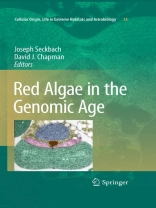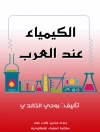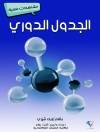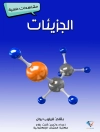r ed Algae in Genome Age book most people reading this book have childhood memories about being enthralled at the beach with those rare and mysterious living forms we knew as seaweeds. We were fascinated at that time by their range of red hues and textures, and most of all, their exotic beauty. t o a scientist, red algae represent much more than apparent features. t heir complex forms have attracted morphologists for centuries; their intricate life cycles have brought more than one surprise to plant biologists familiar only with ferns and fowering plants; their unusual tastes have been appreciated for mill- nia, and their valuable chemical constituents have been exploited for nearly as long, most recently by biotech companies; their diversity in marine, freshwater, and t- restrial environments has offered centuries of engaging entertainment for botanists eager to arrange them in orderly classifcation systems; still, the red algae continue to teach us how many more challenges need to be overcome in order to understand their biodiversity, biological functions, and evolutionary histories.
Innehållsförteckning
ORIGIN AND EVOLUTION.- The Chloroplast Division Machinery: Origin and Evolution.- Evolutionary History and Taxonomy of Red Algae.- GENERAL STUDIES OF RHODOPHYTA.- Invasive and Alien Rhodophyta in the Mediterranean and along the Israeli Shores.- The Extreme Environments of Porphyra, a Fast Growing and Edible Red Marine Macroalga.- Investigations on Reproductive Affinities in Red Algae.- Taxonomic Revisions of Freshwater Rhodophyta in Recent Years.- GENOMIC STUDIES AND BIOTECHNOLOGY.- Porphyra: Complex Life Histories in a Harsh Environment: P. umbilicalis, an Intertidal Red Alga for Genomic Analysis.- Utilizing Red Algae to Understand a Neurodegenerative Disease.- Coordination of Nuclear and Plastid Gene Expression in Red Algae and Green Plants.- Plastid Evolution and the Nuclear Genomic “Footprint” of Red and Green Algal Endosymbionts.- Red Microalgae: From Basic Know-How to Biotechnology.- Red Algal Genomics: A Synopsis.- Bangiophytes: From one Class to Six; Where Do We Go from Here?.- Genomic Contributions to Understanding the Evolution of Red Algal Plastids and Pigment Biosynthesis.- How Have Genome Studies Improved Our Understanding of Organelle Evolution and Metabolism in Red Algae?.- Computational Gene Prediction in Eukaryotic Genomes.- Developments in Biotechnology of Red Algae.- CYANIDIA.- Overview on Cyanidian Biology.- The Cyanidiales: Ecology, Biodiversity, and Biogeography.- Mechanisms of Acido-Tolerance and Characteristics of Photosystems in an Acidophilic and Thermophilic Red Alga, Cyanidium Caldarium.- Redox-Modification of Chloroplast Enzymes in Galdieria Sulphuraria: Trial-and-Error in Evolution or Perfect Adaptation to Extreme Conditions?.- The Thermo-Acidophilic Cyanidiophyceae (Cyanidiales).- Chilean Cave Cyanidium.- BIOCHEMISTRY AND PHYSIOLOGY.-Low Molecular Weight Carbohydrates in Red Algae – an Ecophysiological and Biochemical Perspective.- Red Algal Defenses in the Genomics Age.- OUTLOOK AND SUMMARY.- Summary, Final Comments and Conclusions.












